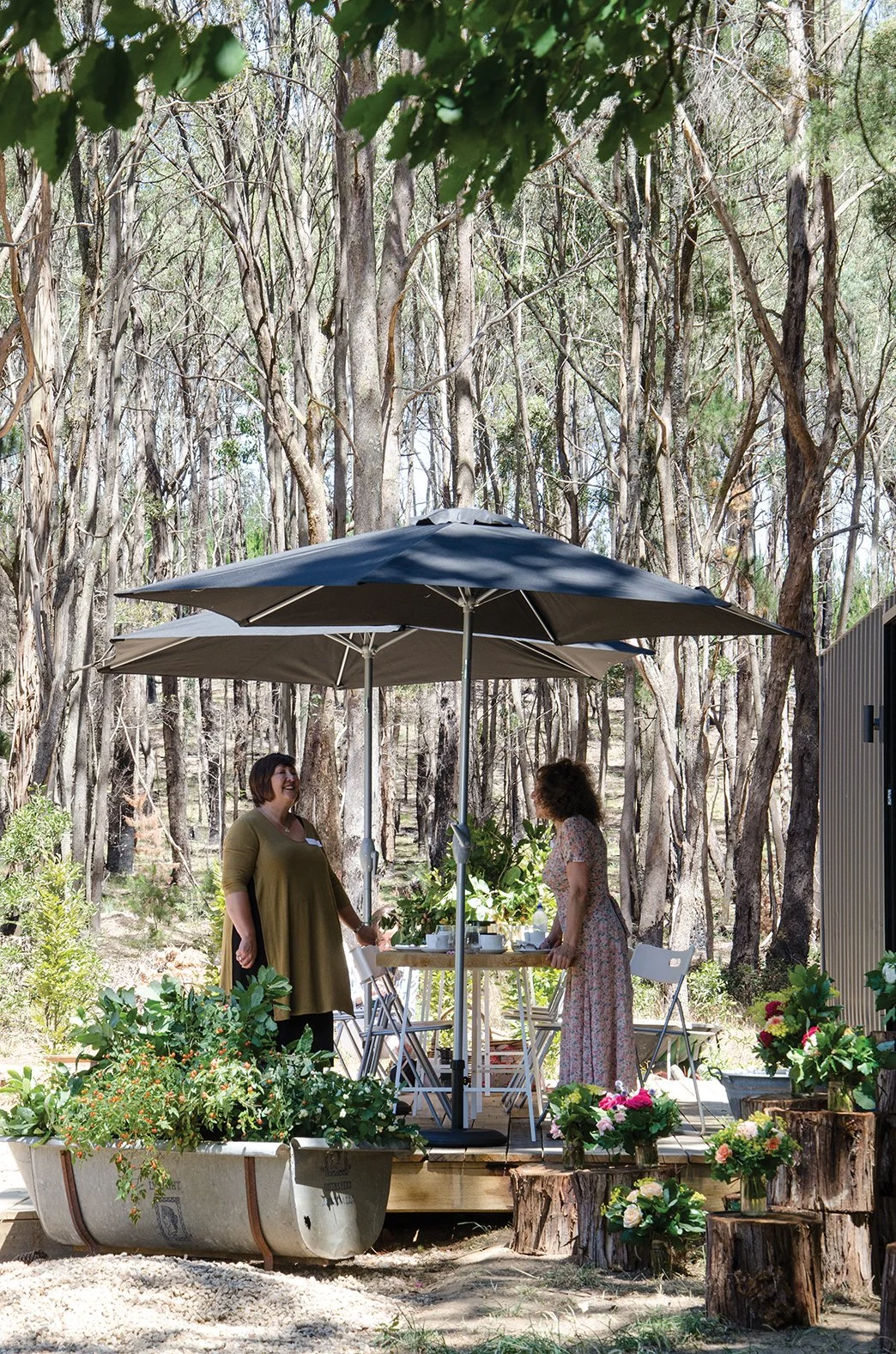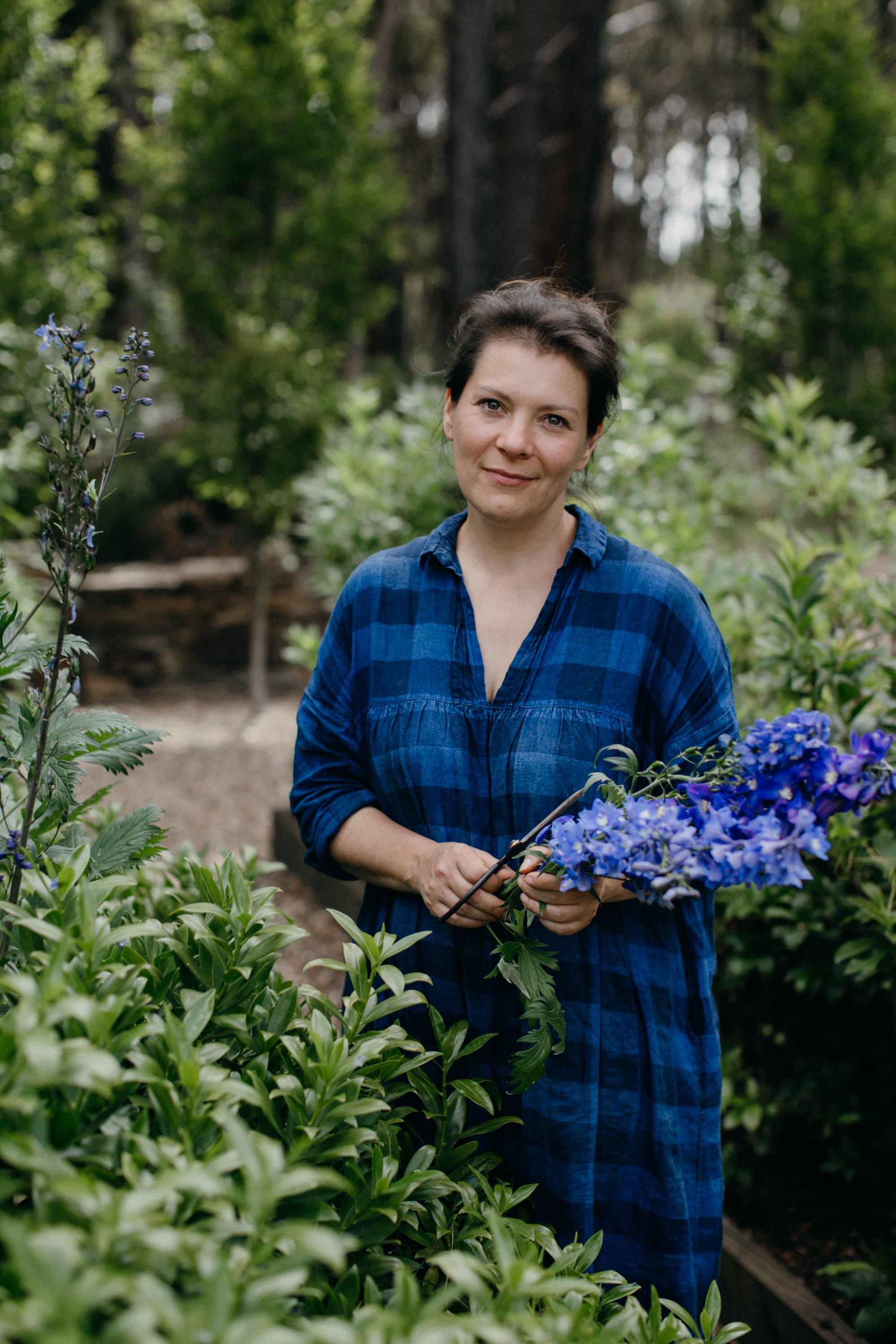Wandering the garden with a cup of tea in hand is one of my favourite things to do. It’s quiet, slow, unhurried. Just a gentle loop to see what’s changed. For someone with a busy mind and restless hands, these little garden walks are the times I find myself exhaling. My thoughts begin to quiet, and my eyes tune in. I stop thinking about what I need to do next and start noticing what’s right in front of me.
That’s how I spotted them—small, textured caps pushing up through the mulch in the Wicking Bed Garden. I crouched down for a closer look. They had that unmistakable honeycombed morel look to them, but I’d never found any growing in real life despite hunting for them in all the right local spots. I sent a photo to my friend Speedy (@speedy6579), who’s an absolute encyclopaedia when it comes to all things botanical. Shared it with another of his mycologist friends, the verdict was in. Both quite certain and equally surprised that what I’d found was Morchella rufrobrunnea—the blushing morel.
It’s not every day you find morels growing in a little backyard garden in central Victoria. Daylesford no less.
They popped up right on the edge of the paths between the wicking beds, where I laid woodchips last year - a space that was lawn when we first moved here. Now, those mulched paths are quietly composting down beneath our feet, becoming rich, living soil in place. I top them up each season and let the cycle begin again. It seems the fungi have found what they need in that environment. Speedy’s advice is to leave them to mature in place, and the spores might have a chance of spreading and naturalising here.
The idea of more morels, living right here, makes me ridiculously happy.
I learnt today that all Morchella species are edible once cooked. That in itself feels like a bit of a gift.
When we lived at Oak and Monkey Puzzle, one of my favourite autumn rituals was mushroom foraging with the kids—searching the property and adjoining pine forests for Saffron Milkcaps (Lactarius deliciosus) and Slippery Jacks (Suillus luteus). Saffron and Oliver, despite being so young, became absolute pros at spotting them. With the first good autumn rains, they’d race to find the first saffron-stained stem of the season. It’s one of those memories that sticks
And now, on this tiny 515 square metre block, we’ve found morels. It feels like a kind of full circle. Unexpected, but somehow exactly right. A quiet little nod from the soil.
But what it brought up for me—once more—is how important observation is. Not just in gardening, but in everything. I’ve always been that way. Even as a kid, I was the one watching. Noticing small things. The way someone moved, the way the air changed before rain, the signs that something was about to shift. It’s how I’ve learnt to garden—not through hard and fast rules, but through paying attention. Seasons, cycles, subtle changes. All of it teaches you if you stop to notice.
It’s also where I feel the most content. I know that word gets thrown around, but I mean it in the truest sense. It’s where I feel most ‘myself’, most at peace. I’m not sure how to explain it without it sounding a bit ‘woo woo’, but it’s the closest I get to that feeling of being completely in the right place, at the right time. Part of something bigger. Connected to the ecologies of all living things.
So no, it’s not just a random mushroom sighting. For me, anyway, it’s a serendipitous reminder. That when I slow down, and pay attention—even just for a moment—the world has a way of showing us things we never expected. And that’s where the magic is.
Workshops are slowing down a little over winter while I focus on writing the book, but if you’d like to keep in touch, the best way is through my monthly newsletter. It’s where I share what’s growing here, what I’m preserving, what I’m learning and so much more—and you’ll be the first to hear when new workshops are announced too.
As always, it’s so lovely having you here,
Natasha xx



































































































































































































































































































